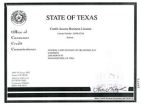Diversifying Investments
If you've heard the phrase "Don't put all your eggs in one basket," then you already know one of the top pieces of advice from the leading financial experts! This simple phrase is the heart and soul behind the concept of diversifying investments. Rather than placing all of your money in one place, you divide your assets among a variety of investments to maximize gain and minimize losses. But how does your average Joe learn how to diversify investments in the best way possible? Let's dive into exactly what is a diversified investment and how you can take advantage of this concept in your personal portfolio:

Different Types of Investments
What is a diversified investment? It means spreading your savings across different types of investments - the key words being "different types." Let's say you have a portfolio of stocks and you want to diversify. Should you load up on new stocks? The smarter option would be to add new types of investments like bonds or real estate. This allows you to take advantage of the different pros and cons of investments across the board. Here are a few of your options:
- Bonds
- International investments
- Real estate
- Stocks
- Cash
- And more
Doing the Math
Just how much of your money should you put into each of these investments? It's important to think practically. We like to use a tiered approach with financial planning. Your first tier of savings is your rainy day fund. This pool of money is used as a safeguard against any emergencies you encounter, like medical issues or auto troubles. Your second tier is your stocks and bonds.
Many financial advisors recommend using a simple calculation to estimate how much to allot to each category. Subtract your age from 100 to get a rough guide of how much to invest in stocks. For example, a 25 year old will put 75 percent of assets in stocks and 25 percent in bonds. If you want to try diversifying investments, then you'll play with these figures even more. Try investing 10 percent of your stock portfolio in international investments or 5 percent in real estate. You'll end up with a well-rounded list of investments.
Risks and Rewards
We've touched on the benefits of diversifying investments and the process of how to do it, but let's go into the philosophy behind the concept. Investing money carries a level of both risk and reward. If you put all of your money in the stock market, you could net a huge profit - or lose everything when the market crashes. If you keep all of your money stashed in cash, you might avoid the risk of the stock market, but you won't reap the potential benefits either. It's important to weigh risk and rewards thoughtfully. The decision is yours alone to make, but many experts recommend taking the extra risks when you are younger and investing more conservatively as you get closer to retirement. This can help you reap the most benefits while avoiding common investing mistakes.
